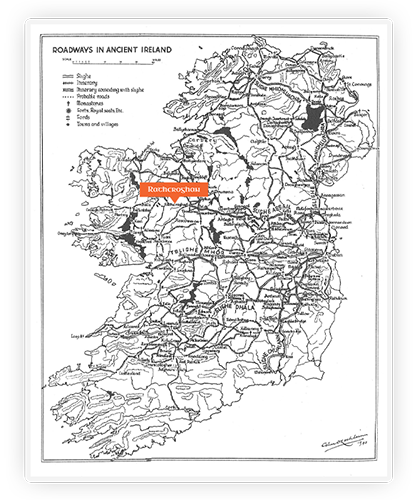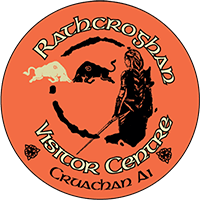THE HISTORY OF RATHCROGHAN


THE ANCIENT CAPITAL OF CONNACHT

Rathcroghan (Ráth Cruachan – The Fort of Cruachan), is a term which is significant on many landscapes. In terms of archaeology, Rathcroghan is a collection of 240 identified archaeological sites, contained within an area of 6.5km². These range in date from the Neolithic Period or New Stone Age, through to the late medieval period, spanning a staggering timespan of over 5,500 years.
It is the location of some 28 identified burial mounds from the Bronze and Iron Age, numerous ringforts (settlement sites) of early medieval date, standing stones, linear earthworks, stone forts, a great Iron Age ritual sanctuary, and even a Gate to Hell! In truth, an archaeologist’s dream.
However, Rathcroghan is also incredibly important from a literary point of view. It is remembered as one of the great locations of ceremonial assembly or óenach in Ireland. These fairs or assemblies took place at important points in the year, usually at the changing of the seasons, and were occasions for judgments to be passed, for kings to be crowned or inaugurated, and for great feasting and entertainments.



SIGNIFICANCE OF RATHCROGHAN

Rathcroghan’s significance is also recorded also in the early medieval literature is as one of the three chief burial places of Ireland, the other two being at the Fair of Tailtiu and at Brú na Bóinne. Given the great number of burial mounds identified through archaeological investigation, it is no surprise that it is described as such.
In several early tales, Rathcroghan figures as a kingly settlement for the Connachta or Fír Ol nÉcmacht. The Connachta (descendants of Conn) were the ruling dynasty in the territory of Connacht from about the fifth century. This royal settlement also features very heavily in the Ulster Cycle of Tales, particularly as it is the location of the palace of the famous Iron Age Warrior Queen Medb (Maeve) of Connacht
Because of this, the central tale of the Ulster Cycle, and Ireland’s national epic, the Táin Bó Cúailnge (Cattle Raid of Cooley), locates both its beginning and end here at Rathcroghan.
As we progress into the later medieval period, Rathcroghan still retains a symbolic hold over the elite of Ireland, and much evidence exists to show that it continued to be regarded as synonymous with the kingship of Connacht.
As a result, Rathcroghan can truly be described as the ancient capital of Connacht.


Rathcroghan Timeline



